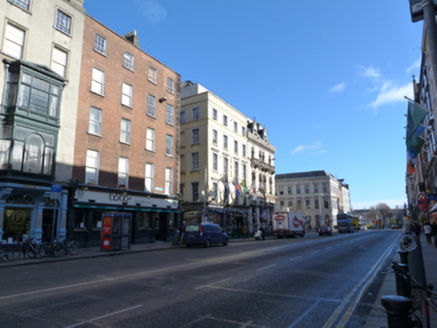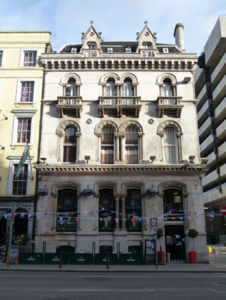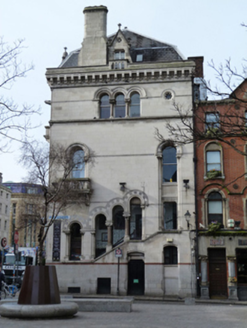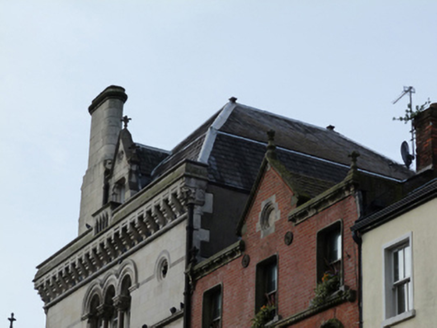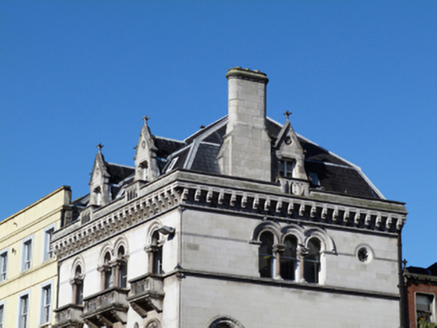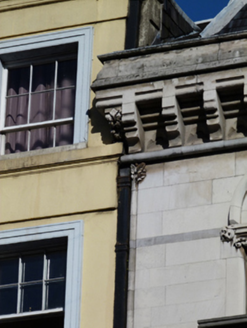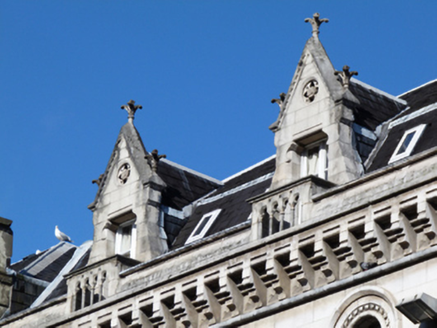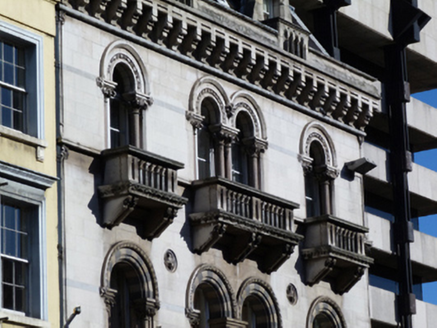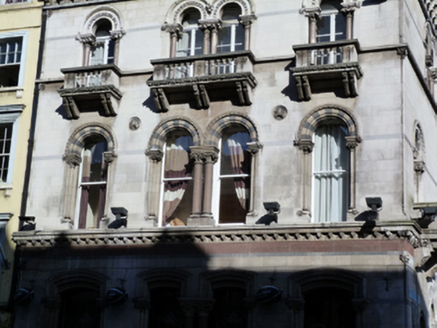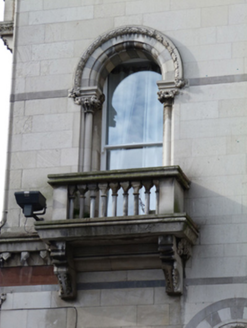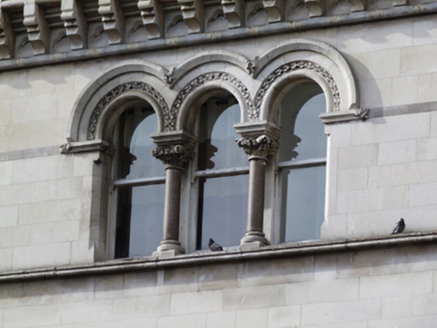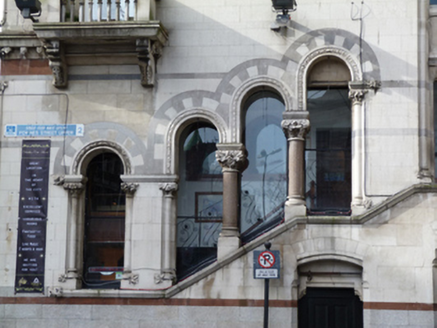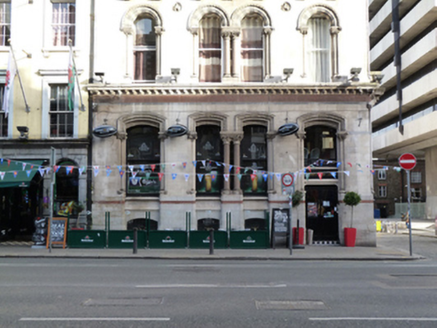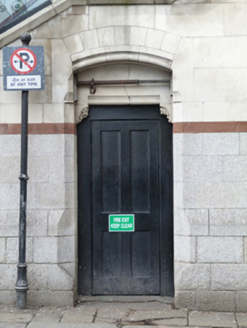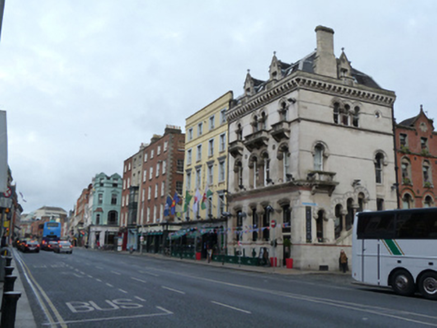Survey Data
Reg No
50020153
Rating
Regional
Categories of Special Interest
Architectural, Artistic, Historical, Social
Previous Name
Crown Life Assurance Company
Original Use
Office
In Use As
Public house
Date
1865 - 1870
Coordinates
315704, 234062
Date Recorded
27/02/2015
Date Updated
--/--/--
Description
Corner-sited attached three-bay three-storey former offices over raised basement and with attic accommodation, built 1868, having two-bay elevation to east. Now in use as public house and hotel. Mansard slate roof having gabled half-dormer windows with crockets to barges, recent rooflights, carved limestone parapet, balustraded to front of half-dormers, ashlar limestone chimneystacks, and cast-iron rainwater goods. Carved limestone cornice and eaves course having brackets and trefoil motifs over ashlar limestone walls with red sandstone and carved limestone string courses, having engaged colonnettes with foliate capitals to arrises, carved limestone roundels and cornice over ground floor, raised granite plinth course. Smooth rendered wall to rear (north) elevation. Round-headed window openings to upper floors, paired to centre to front, one double-height to east elevation, having continuous carved limestone sill courses, polished red granite and carved limestone colonnettes with foliate capitals, carved surrounds having foliate detailing and stops, polychrome limestone voussoirs to first floor, one-over-one pane timber sliding sash windows to first floor, timber casement windows to second floor. Stepped arcade to east, triple-light arcade to second floor. Limestone balustraded balconettes on paired carved limestone brackets to openings to second floor. Oculus to second floor to east, carved multifoil opening, chamfered surround. Stilted segmental-headed window openings with limestone sills, engaged limestone and polished granite and carved limestone colonnettes with foliate capitals and carved stone abaci, carved limestone hood mouldings, one-over-one pane timber sliding sash windows to ground floor to front. Segmental-headed openings to basement area, bull-nosed granite surrounds and steel bars. Shouldered flat-arched door opening with chamfered granite reveals, limestone lintel and double-leaf half-glazed timber panelled door to front. Stilted segmental-headed door openings with chamfered granite reveals, ashlar limestone voussoirs, carved Portland stone tympanum and timber panelled door to east. Located at junction of Dame Street and Fownes Street Upper.
Appraisal
Dame Street derives its name from a dam that powered a mill on the River Poddle. It was one of the principal streets of the city, leading from the Parliament House (now Bank of Ireland) to the Castle. The street was widened by Samuel Sproule and Charles Tarrant of the Wide Street Commissioners in the late eighteenth century. Many buildings, including this one, were rebuilt in the late nineteenth and early twentieth century for use as commercial and financial institutions. This building was built as the headquarters of the Crown Fire and Life Assurance Company in Ireland, by Thomas Newenham Deane in 1868, modeled on the company's London offices designed, 1858, by his former partner Benjamin Woodward. The Romanesque façade creates a pleasing sense of symmetry, while a high level of embellishment ensures that this composition stands out amongst its neighbouring buildings. It exhibits much elaborate carved detail, carried out by Charles Harrison, the quality of which attests to the artisanship involved in its execution. Sandstone, granite and Portland stone are used to good effect to provide tonal variation to the façade. The side elevation, with its attractive stepped arcade of windows to the principal staircase, was made more prominent by the demolition of the buildings on the east side of Fownes Street for the construction of the Central Bank. Retaining its original form, fabric and character, it makes a striking contribution to the architectural character of the area. 46-47 Dame Street was the building from which James Law of the Crown Life Assurance Company issued invitations (22nd May 1885) to insurers to establish an Insurance Institute of Ireland (see also 50020241; 50910235).
